





To build the Sydney Harbour Bridge would be an undertaking as colossal as the structure itself.
It would take eight years, 1400 labourers, as many as 6 million hand-driven rivets connecting roughly 52,800 tonnes steel beams, and 272,000 litres of paint.
Loans used to finance the construction would take the city 55 years to pay off. In the end, the total cost of the Bridge reached over £6.25 million, or more than $500 million today—as well as sixteen workers’ lives.
Once completed, it would stand as the largest single-arch bridge in the world.
At 3 pm on the 28 July 1923, construction of the Bridge on the Harbour’s North Shore commenced. The Honourable Richard Thomas Ball, M.L.A., Minister for Public Works and Railways, sank a shovel into the dirt outside the North Sydney railway station to mark the occasion. Amidst loud cheers, the sod-turning was announced by the Mayor of North Sydney, G.T. Clarke, who said:
I have the honour of presiding at this celebration – a prelude to one of the greatest events about to take place in modern history – the construction of the Sydney Harbour Bridge!
Bradfield’s initial plans for the Sydney Harbour Bridge were only one part of a unified vision he had for the city: the complete modernisation of Sydney’s transport system.
This system would include an electrified suburban railway, spanning above and below ground to service the one million residents of the now-sprawling city.
![Bird's eye view of Sydney showing the proposed city and suburban electric railways [cartographic material] / by J.J.C. Bradfield, Chief Engineer, Metropolitan Railway Construction. Bradfield, J. J. C. 1867-1943. (John Job Crew): 1915](/assets/images/episodes/3/c17399_0038_c.jpg)
Engineering encompasses the utility of material things with the beauty of spiritual things…
Bradfield had lobbied hard for what would be the winning design of the Bridge: a single-arch bridge.
Its huge proportions would make it much more difficult to build than any other competing design—its span would be over a kilometre in length. However, Bradfield was sure that the solid rock of the Harbour’s foreshores could more than withstand the weight of the giant structure:
Future generations will judge our generation by our works. For that reason and from consideration from the past, I have recommended granite, strong, imperishable, a natural product, rather than a cheaper artificial material, for the facing of the piers…
However, a consulting engineer with Dorman Long & Co. named Ralph Freeman also claimed credit for the design, having been responsible for the Bridge’s final plans under the contract with the government. In 1929, Freeman was quoted in the Sydney Morning Herald as saying that Bradfield:
…Did not inspire a single feature of the design!
And that Bradfield had contributed…
No more a design of a bridge than a photograph of a liner was the design of a ship.
Some say a bitter rivalry broke out between Bradfield and Freeman; historians now say this was more an argument about the meaning of the word ‘design’, concluding that the final bridge was based on Bradfield’s initial plans but executed by Freeman in the final construction.
Granite for the pylons would come from the quarry in Moruya, New South Wales.
Dorman Long & Co.’s successful tender had specified that all the materials and, most importantly, labour for the project would be locally sourced. The granite for the decorative pylons would come from Moruya; the sand from the Nepean river; and the cement from Kandos. Ultimately, however, the majority of the steel would come imported from England, with just 20% locally fabricated at steelworks in Newcastle.
Nevertheless, the Bridge would still eventually rise to be a potent symbol of hope during the crushing years of the Depression—providing both jobs and a vision for Sydney.
Watching the Bridge slowly materialise became a hugely popular pastime for Sydneysiders throughout the near-decade of construction.
As the structure took its shape, hundreds of people gathered daily to bear witness to the herculean task being undertaken in their city.
Robert Emerson Curtis wrote of the heady excitement of the scenes in his book, Building the Bridge:
A year ago, the long grey shops at Milsons Point resounded with life. The air was filled with the thunder of metal, the ringing voice of the giant steel cutter; the ribald stuttering of electric riveters, the whanging of hammers and the shouts of men.
However, the Bridge was never simply an arch across the water. For the bridge to function, far-reaching development was needed—and it would reshape North Sydney. The ferry arcade at Milsons Point, where thousands of commuters had converged for the day’s travel, was demolished and its ferries shifted. Tram lines were rerouted. A new highway was introduced, linking the bridge to Lane Cove through the heart of Milsons Point.
People discovered, with maps marked in pink, that their homes, businesses and whole neighbourhoods would be demolished.
In Lavender Bay, Reverend Cash, Rector of Christ Church, documented the upheaval in some 3000 photographs. In his book, Parables of the Sydney Harbour Bridge, he writes that amid the removal of families:
…no part of NSW has undergone such radical change within the last sixty years as Lavender Bay and Milsons Point… Within the compass of the foreshores of Dawes Point and Milsons Point, we are witnessing day by day, scenes of wondrous change…
Whole streets of the Rocks and the North Shore in the Bridge’s path were demolished.
500 homes were destroyed and 400 families displaced with no compensation. Only landowners were deemed worthy of monetary benefits; leaseholders and casual renters were left to fend for themselves.
do beg of you to let me hold on as long as possible. I shall be left not only without a home, but without the means of living. I’m crippled with rheumatism. I’ve been unable to go out and look for another house, but my next door neighbour, well she’s been out and about nearly everyday and she’s been unable to hear of any place and well she’s much younger, and more capable and if she couldn’t meet with any success there’d be no chance for me.
Letters from the Ministry unceremoniously delivered the news of impending homelessness to bewildered residents and shop owners:
Sir, I hereby, as agent for the Minister of Public Works, your landlord, and on his behalf, give you notice to quit and deliver up possession of house and premises…
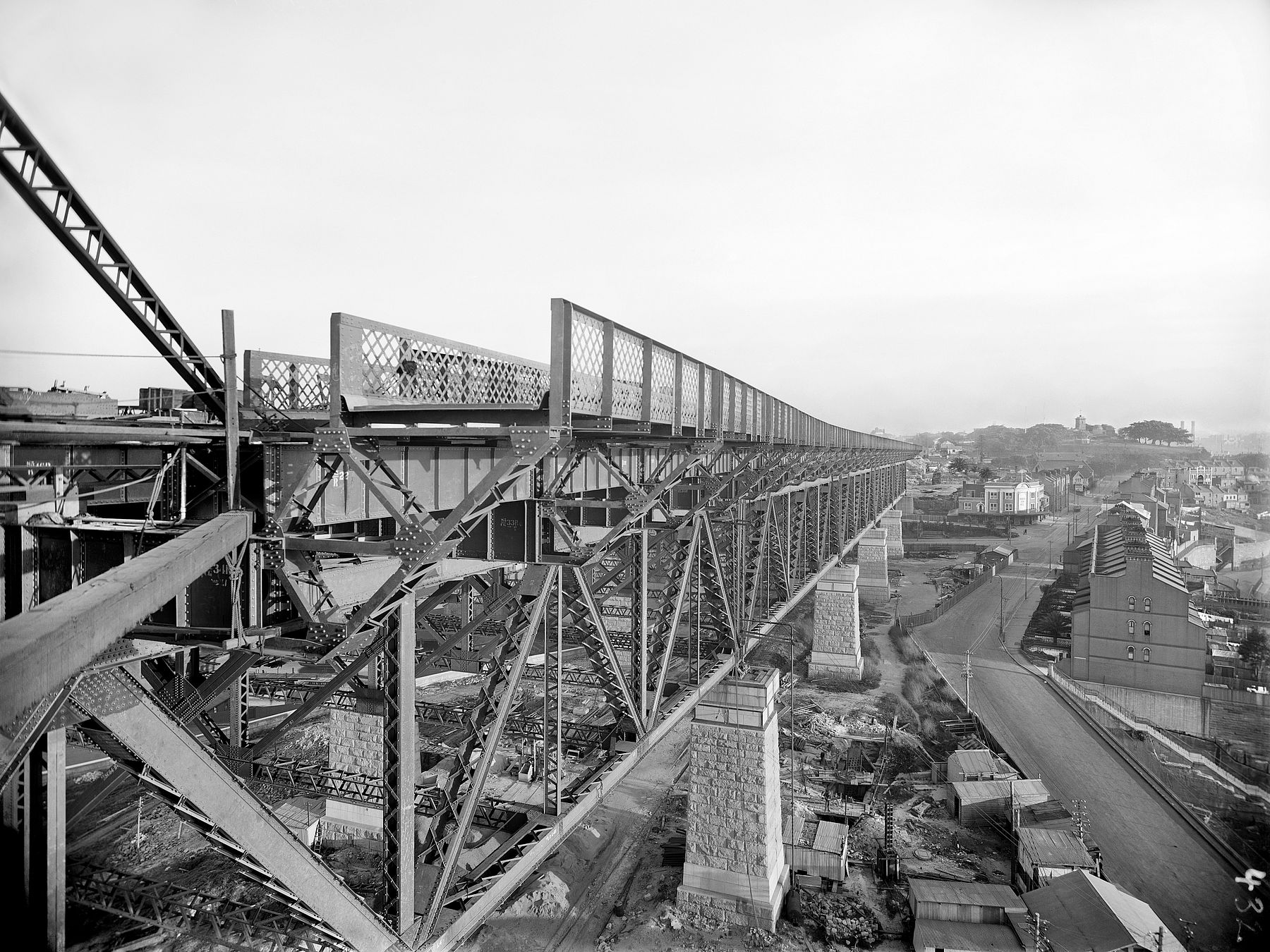
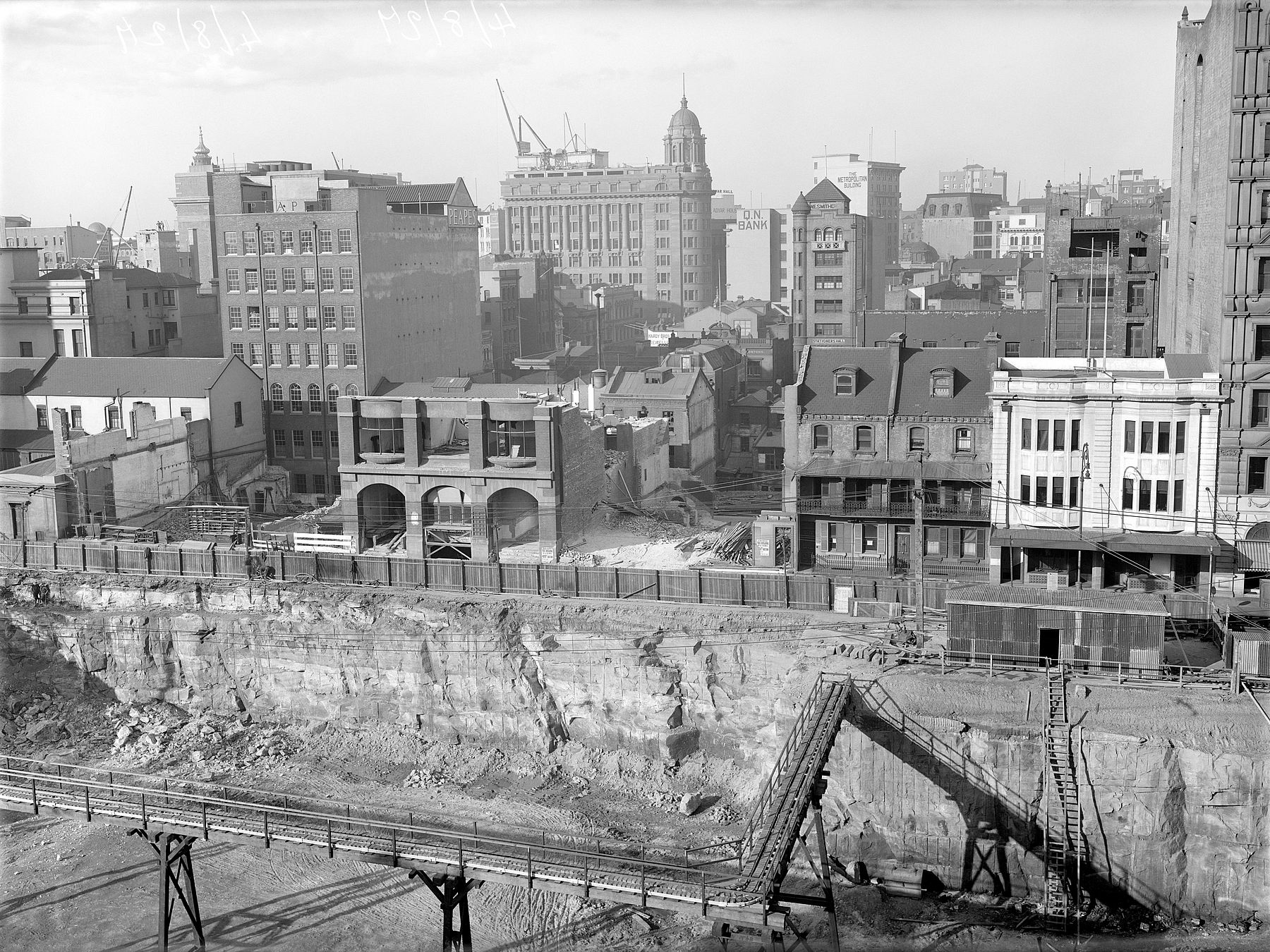
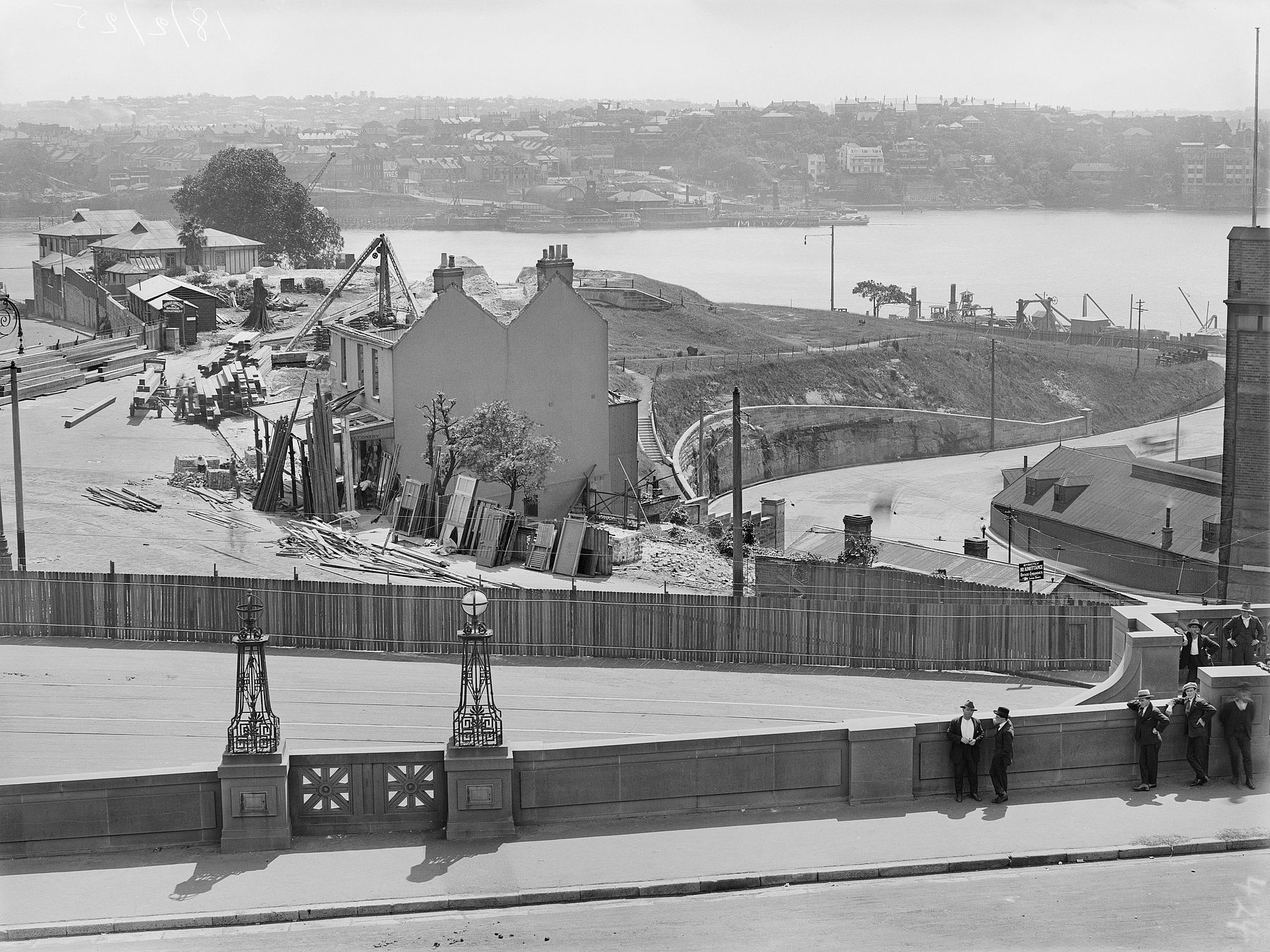
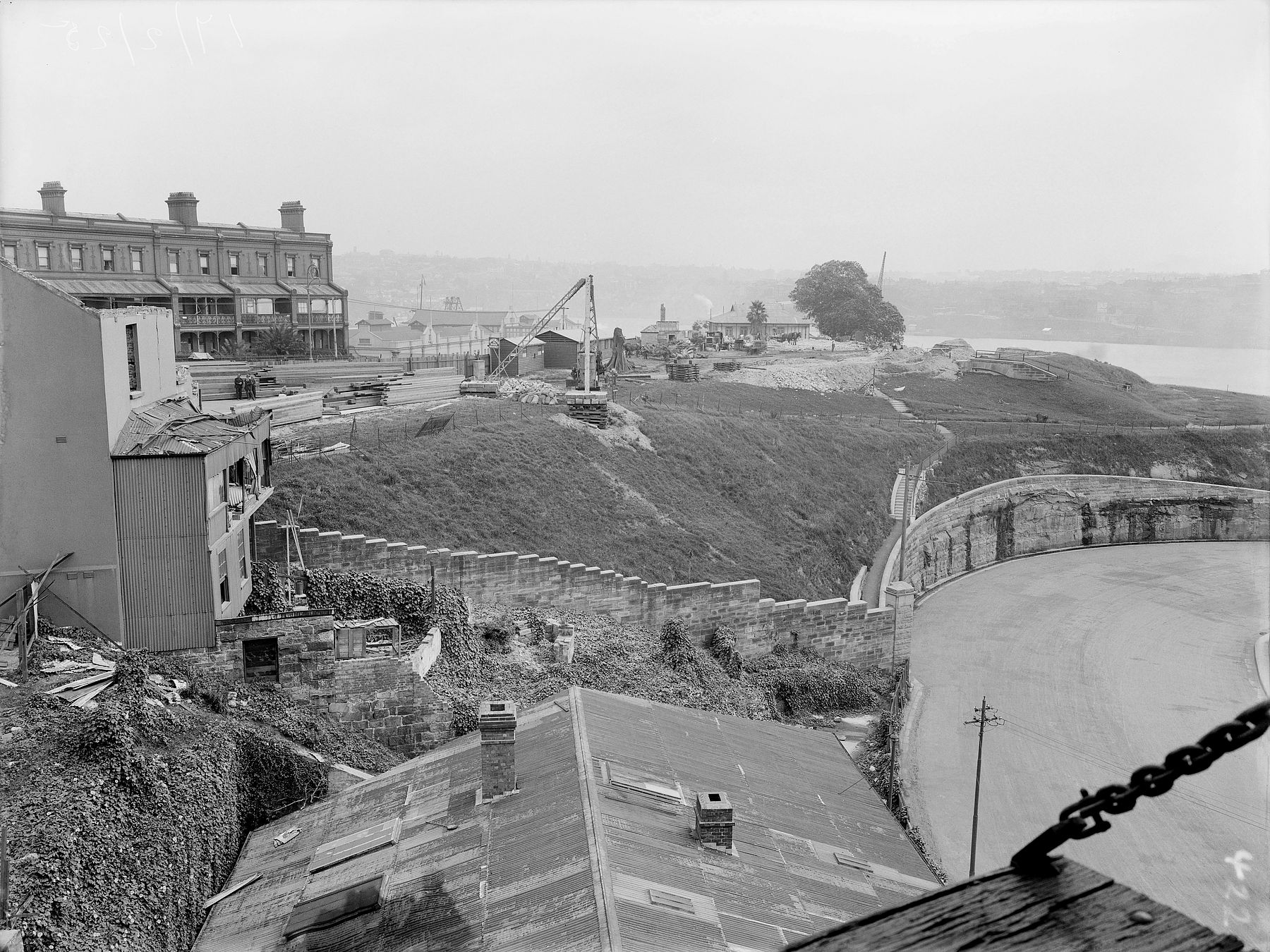
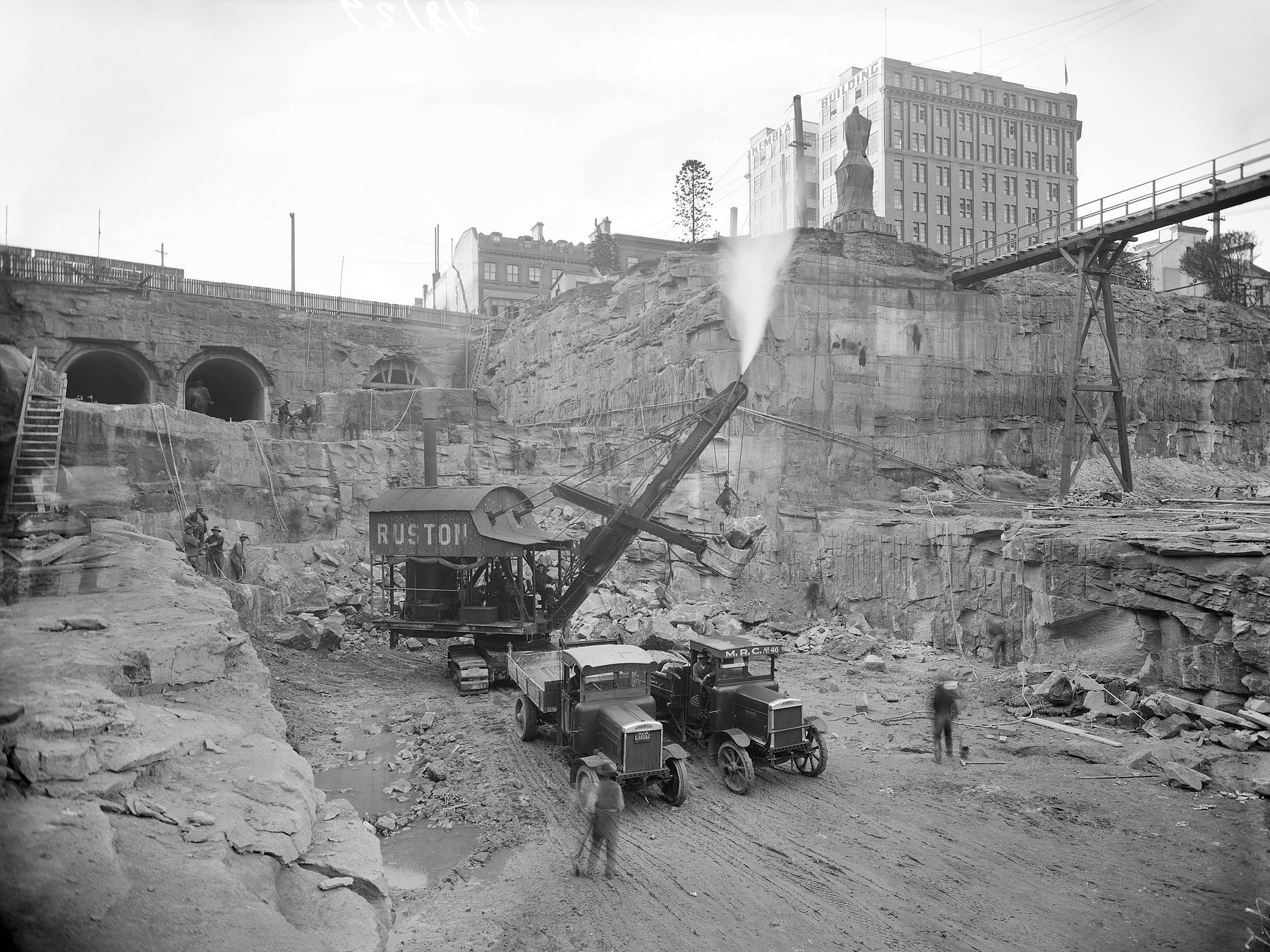
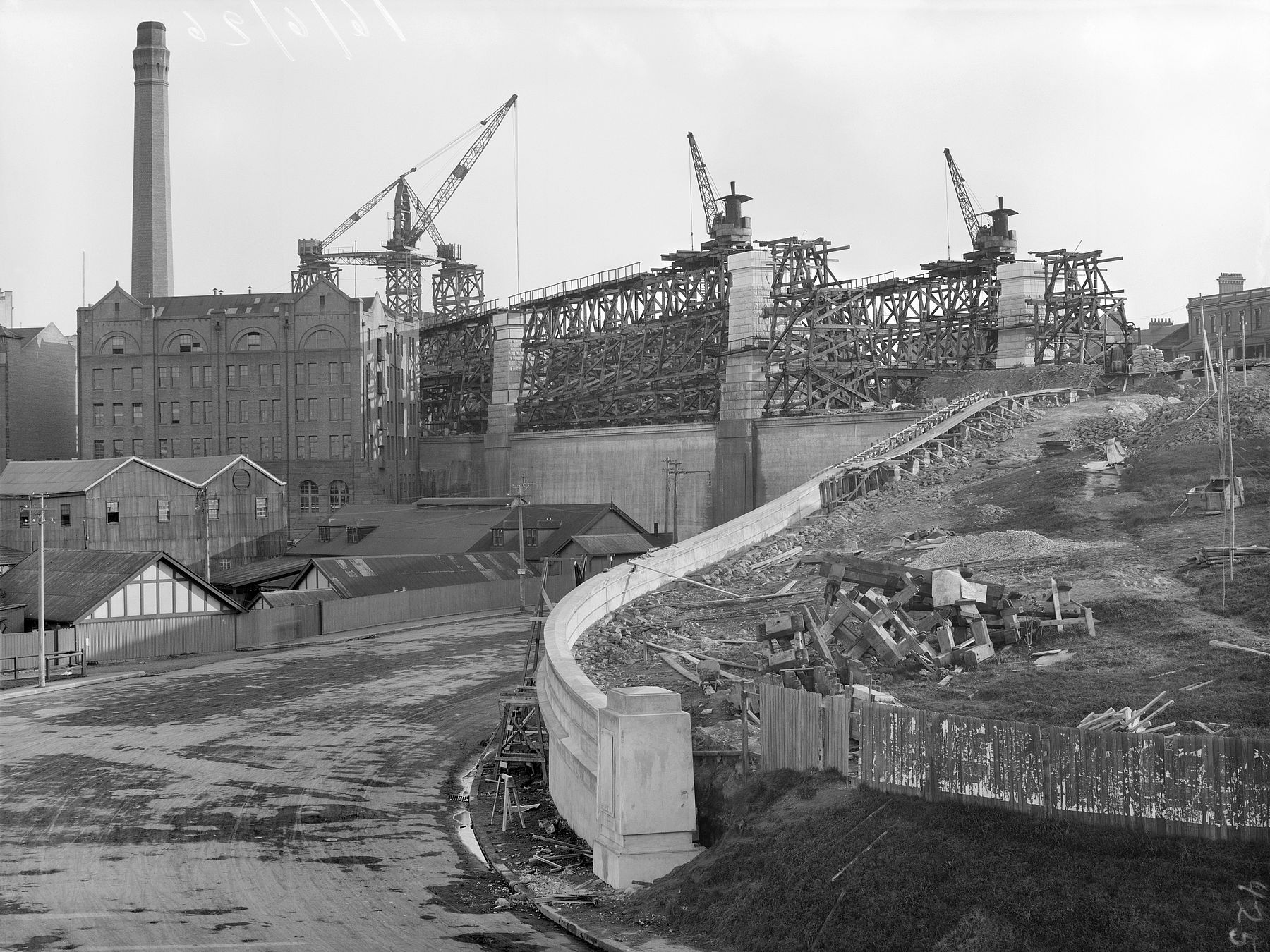
Though the construction of the Bridge brought displacement and hardship to no small number of residents of Sydney, the devastation of the Depression years would also find major relief for others in the city with the building of the Bridge.
Sydney was ringed by soup kitchens… Every night thousands slept in the parks, on railway stations and in shelters. Sydney became a city of beggars. Many had held good jobs in the past. But their spirit had been broken.
Every night thousands slept in the parks, on railway stations and in odd shelters.
In 1932, national unemployment hit an all-time high of 30%, but Sydney recorded just 10%, buoyed by the construction of the Bridge.
The Bridge became known as the ‘iron lung’ for its massive injection into the economy.
Its construction brought employment to a constant workforce of 1400 men onsite and many hundreds more in the steel, cement, sand and stone trades supplying its raw materials.
The government favoured giving this work to war veterans, union members, and men with families. Working week hours on the Bridge were cut from 44 to 33 hours, in order to give jobs to more people overall. Workers came from diverse backgrounds: English engineers, Scottish and Italian stonemasons, American, British and European riggers and Irish and English boilermakers and machinists.
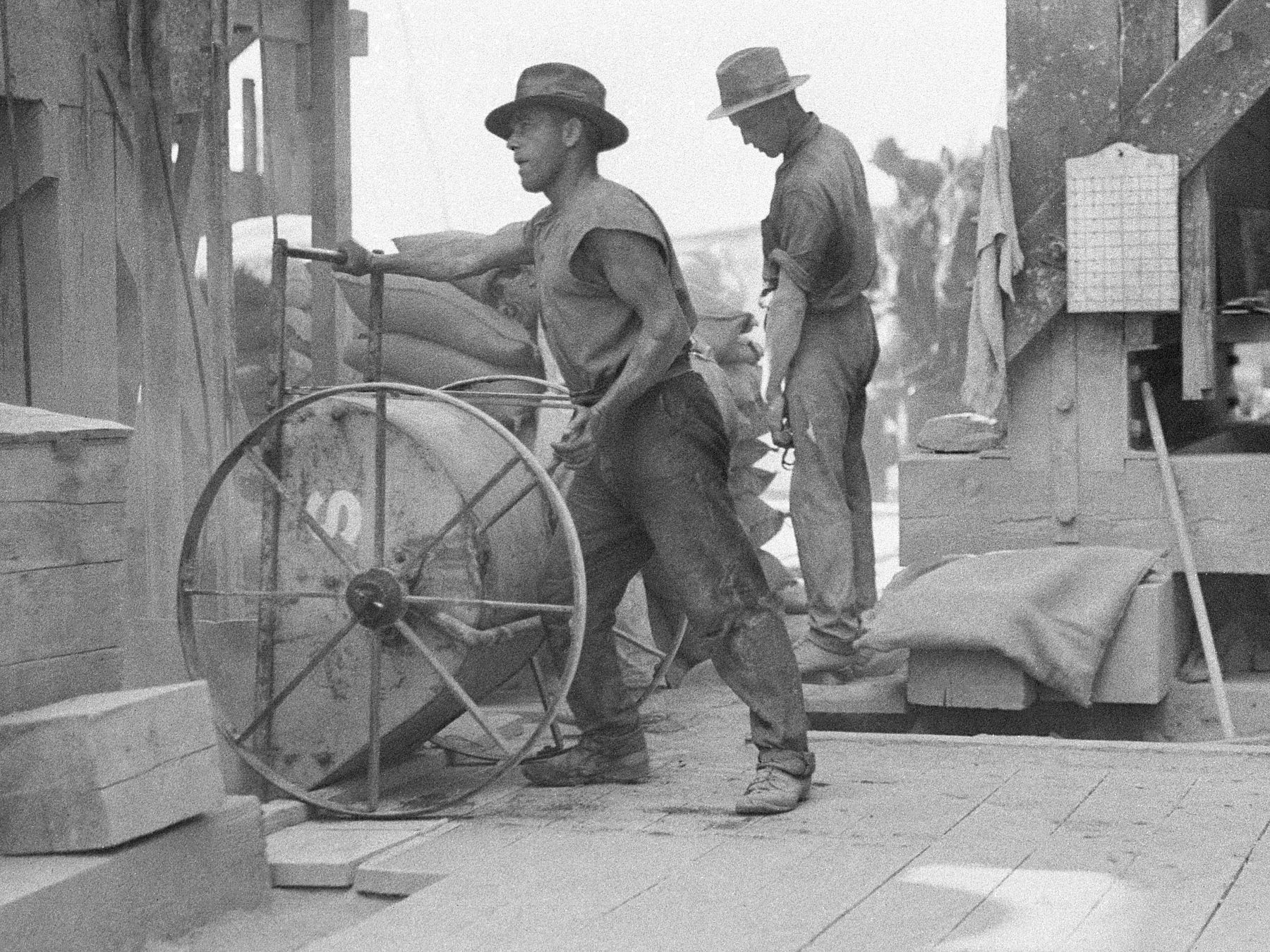
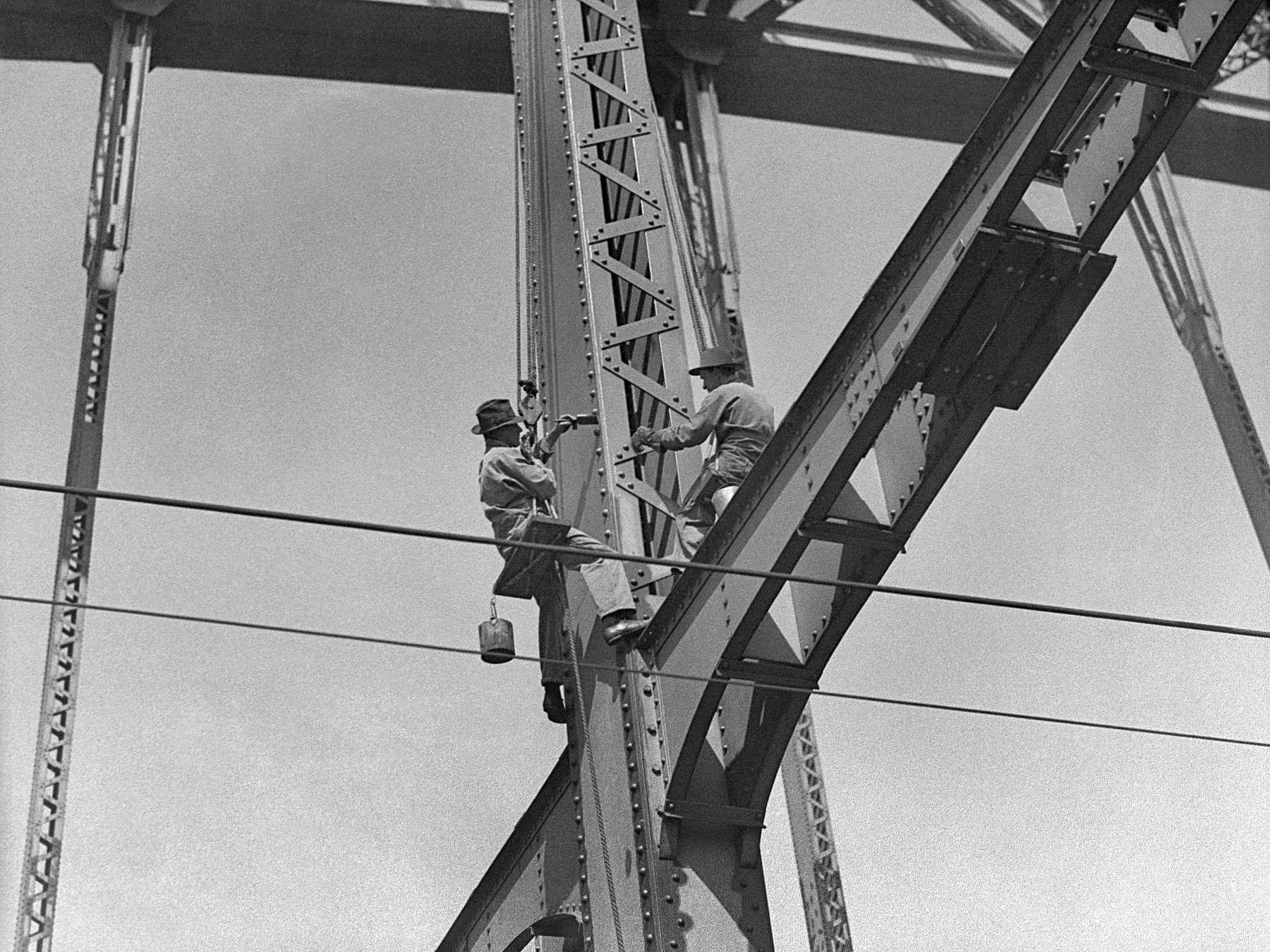
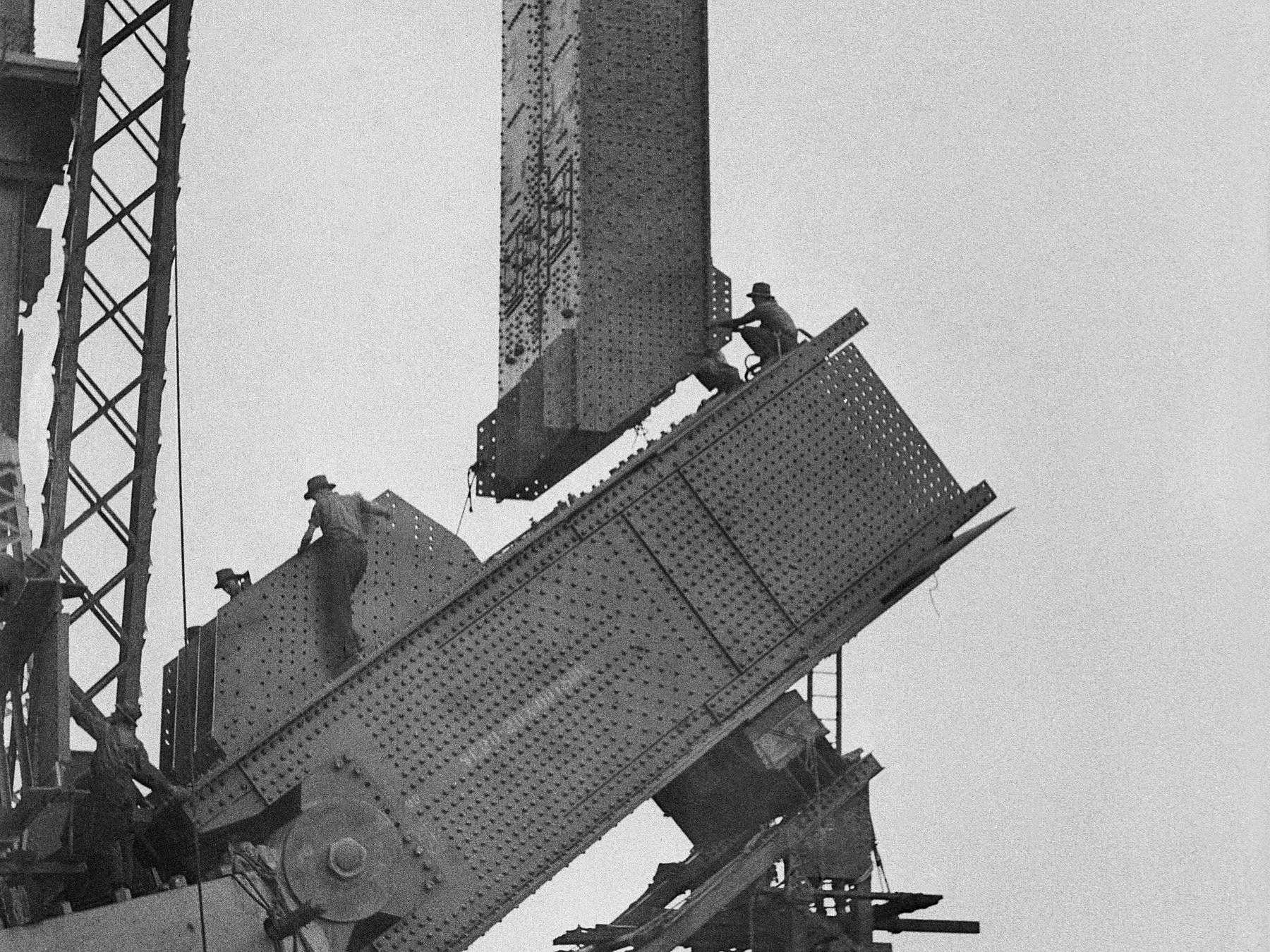
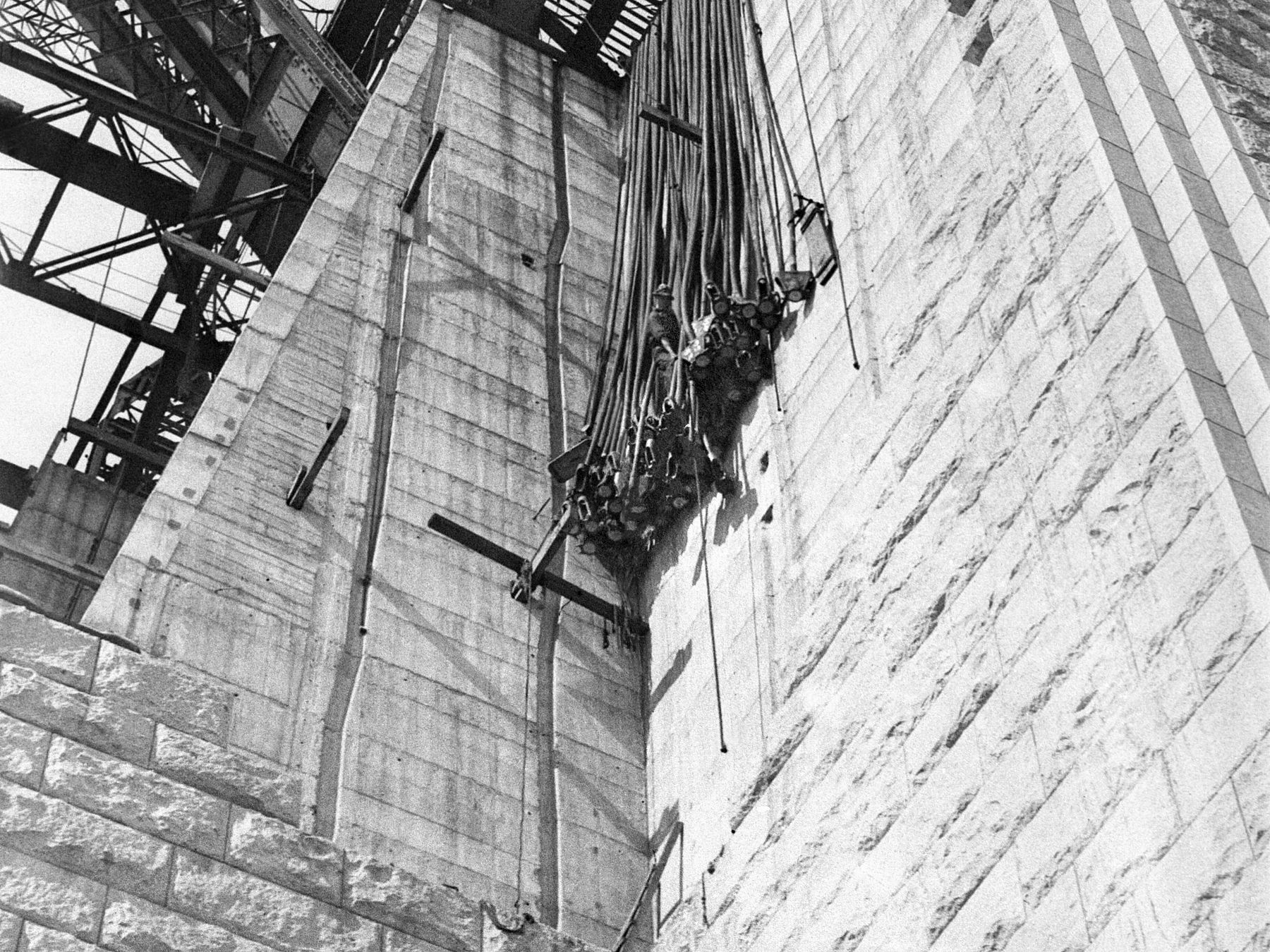
Gainful employment on the Bridge, however, could come at great cost for some labourers. The work was physically gruelling and incredibly dangerous; accidents were unavoidable. Sixteen men were killed in accidents on the Bridge and in its attendant worksites.
Reg Saunders worked as an apprentice stonemason at the Moruya Quarry.
Born in 1909, Reg was raised in Moruya. He was encouraged to take the apprenticeship on the advice of his father, whose life had consisted of unskilled, arduous work. He was only 19 years old when he began his apprenticeship.
The initiation of a stonemason is a bloody business… The first skill that was necessary was to strike the tool with a four-pound hammer with the idea of making some impression on the granite… You’d get more confident the harder you would hit until a critical moment would crop up and instead of hitting the head of the punch, you’d hit your hand… You’d knock off a piece of skin as big as shilling piece and the blood would flow… The initiation process would go on for three months.
Standing on the Bridge, hundreds of feet in the air and secured only by rope, workers would catch the newly forged, metal rivets and bolts in buckets of water and hammer them into their beams. They could only hope to avoid being struck by the scalding-hot bolts, or miss catching one to have it fall onto someone else working below—possibly fatally.
Vera Holliday worked in the Sydney Harbour Bridge Dawes Point office of Dorman Long & Co. as a comptometer operator. She vividly recalls the rivet workers:
…the poor little rivet boys who used to catch the rivets. Of course, they were very, very clever at catching rivets in tin cans and they had to be very accurate but of course sometimes the unexpected would happen and a chip would come off, and although their trousers were well tucked in to their boots, every now and then one would go inside their boots and believe me that can of water that was ready, waiting for them to jump into was always very welcome to them.
Many of the fatalities on the construction were the result of monstrous injuries, such as those recalled by worker Bob Colefax:
At Moruya, Harry Waters a crane chaser whose leg was severed by a crane counterweight – he died in hospital a couple of days later and quarryman Percy Poole was crushed by granite.
Jack McCrae was a concrete packer during the building of the Sydney Harbour Bridge. He recalls the death of Tom McKeon:
The first accident I remember in 1927 or ‘28, a man by the name of Tom McKeon was killed on the Dawes Point side of the Bridge between the pylon and the next pier. Unfortunately he was on a scaffold and the chain operating this block became entangled in his leg and the scaffolding capsized and Tom was falling to the ground. I went out to his funeral at Botany Bay with a lot more that day.
In 1928, the construction of the
‘coat hanger’ steel arch itself began.
The concrete pylons rose first on either side of the Harbour, each fronted with granite quarried from Moruya, a town 305 km to the south of Sydney.
It would take two years for the arches to touch in the middle, forming a structure that would come to weigh 39,000 tonnes. The engineers had been fraught with anxiety; whether such an architectural feat would succeed would only be known once it had been attempted.
![[Bridge construction showing granite on pylons] showing Quarry at Moruya used for construction of the Sydney Harbour Bridge, albums, photographs and clippings by Stanley, S.B. Purves, 1925-1927, PXD 747](/assets/images/episodes/3/a5486047u_retouched_crop_c.jpg)
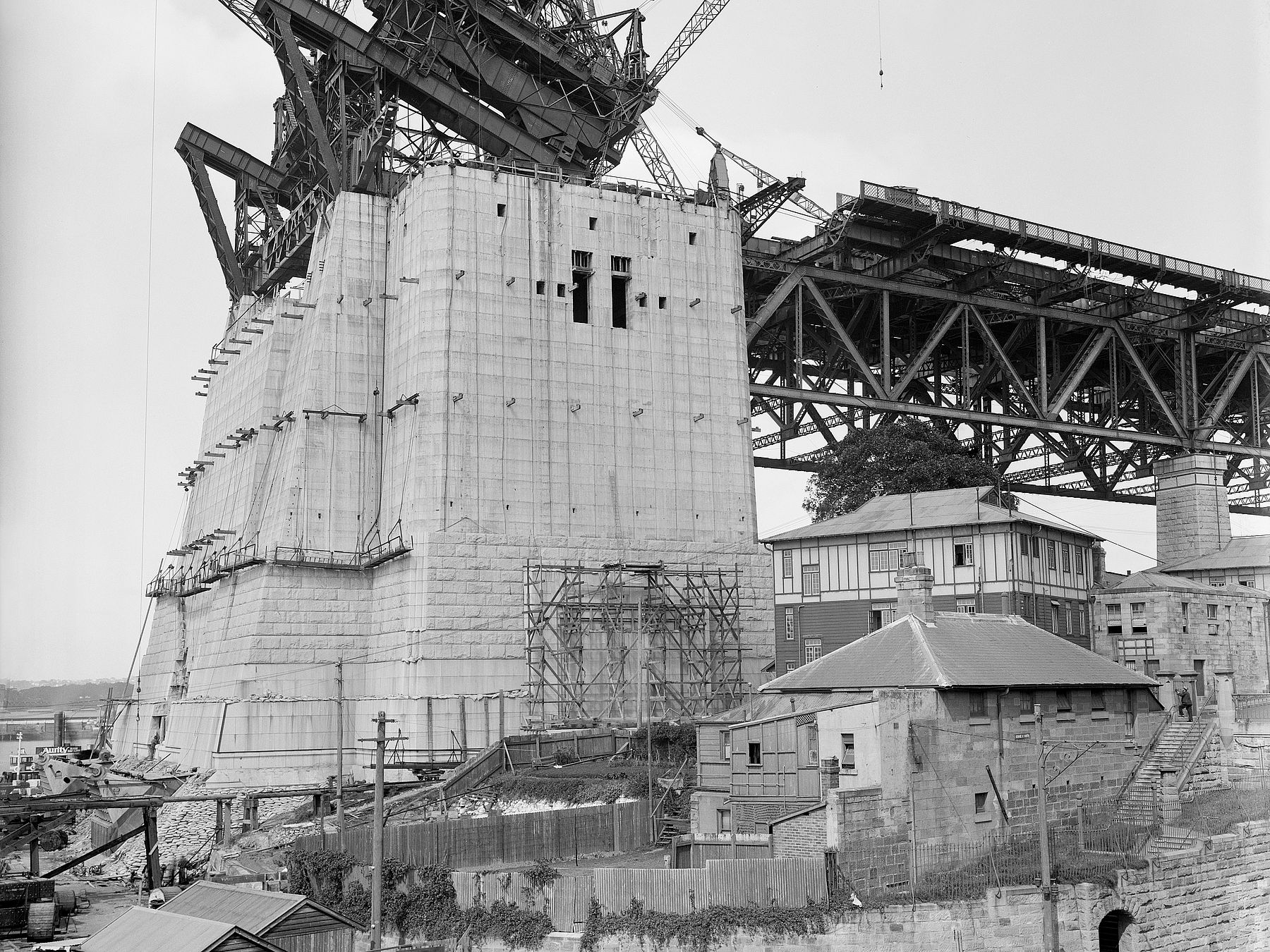
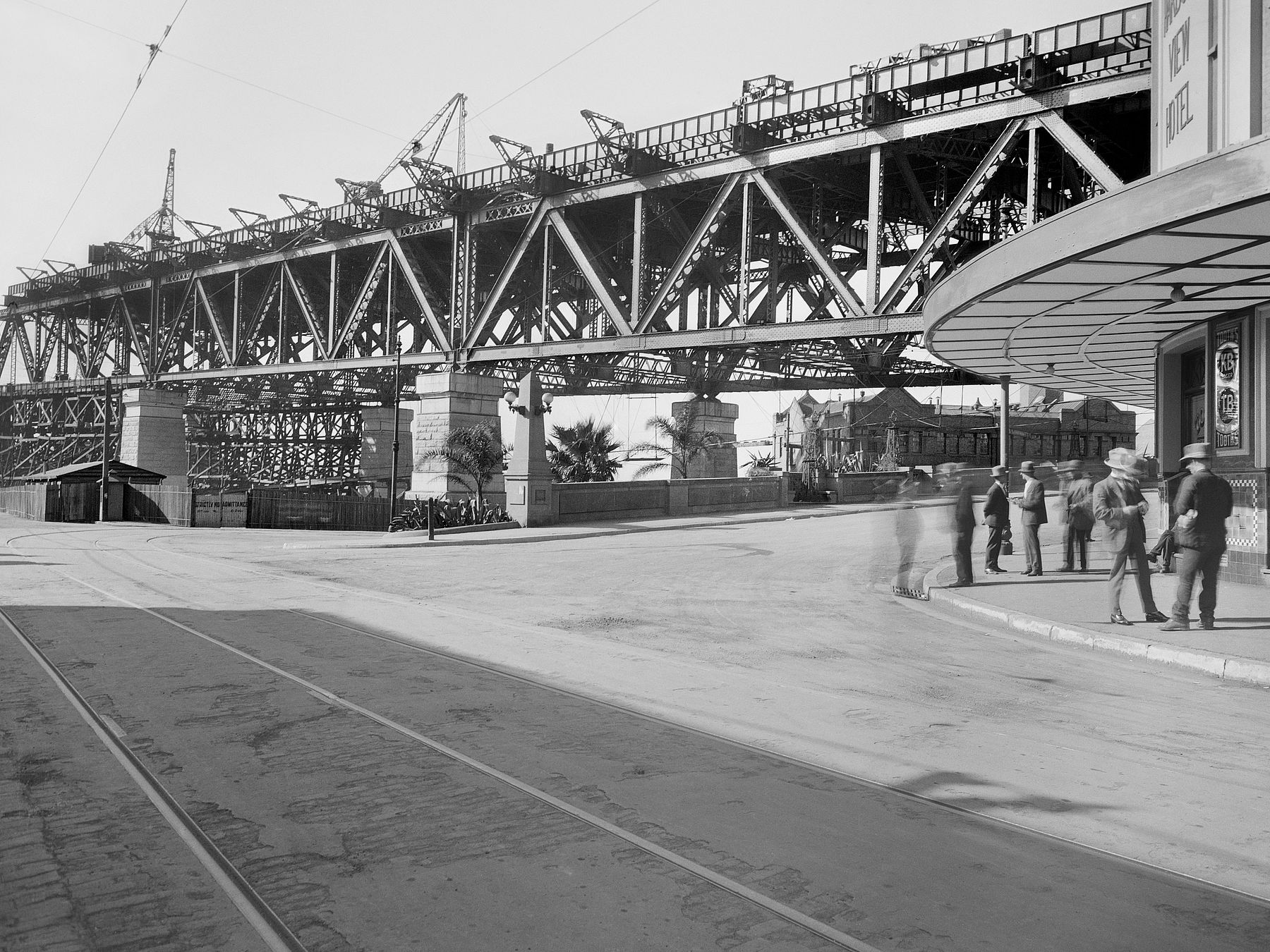
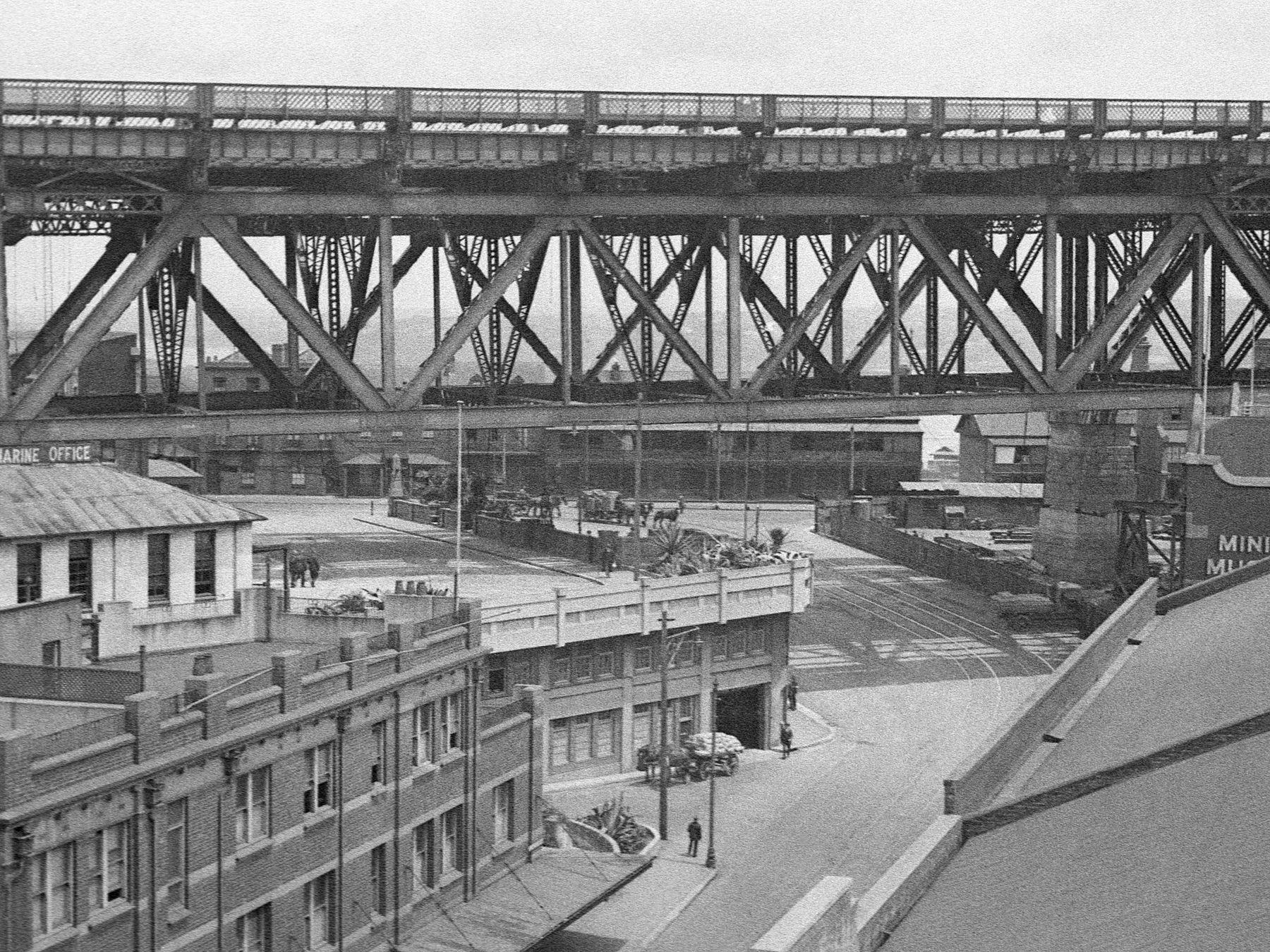
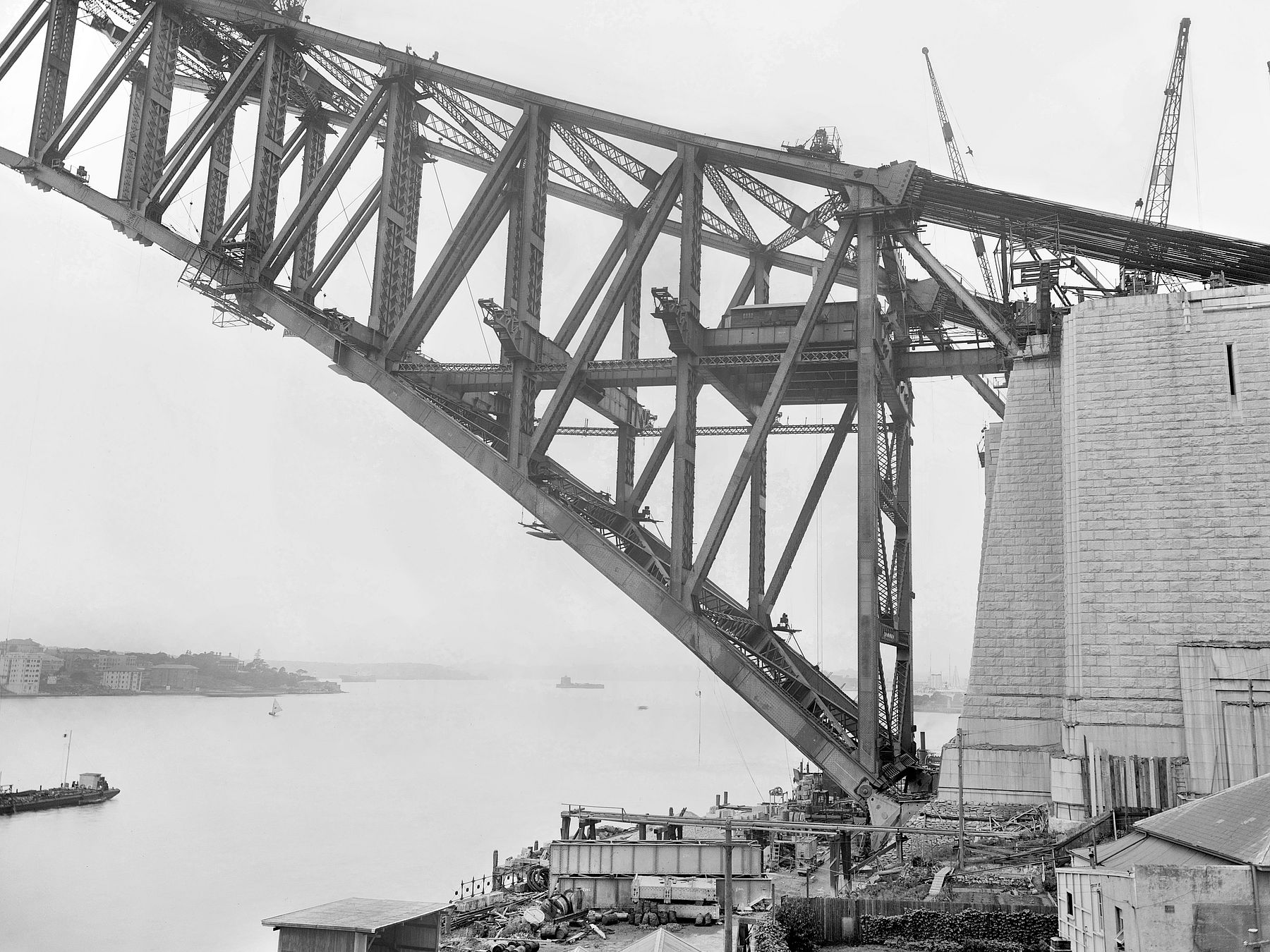
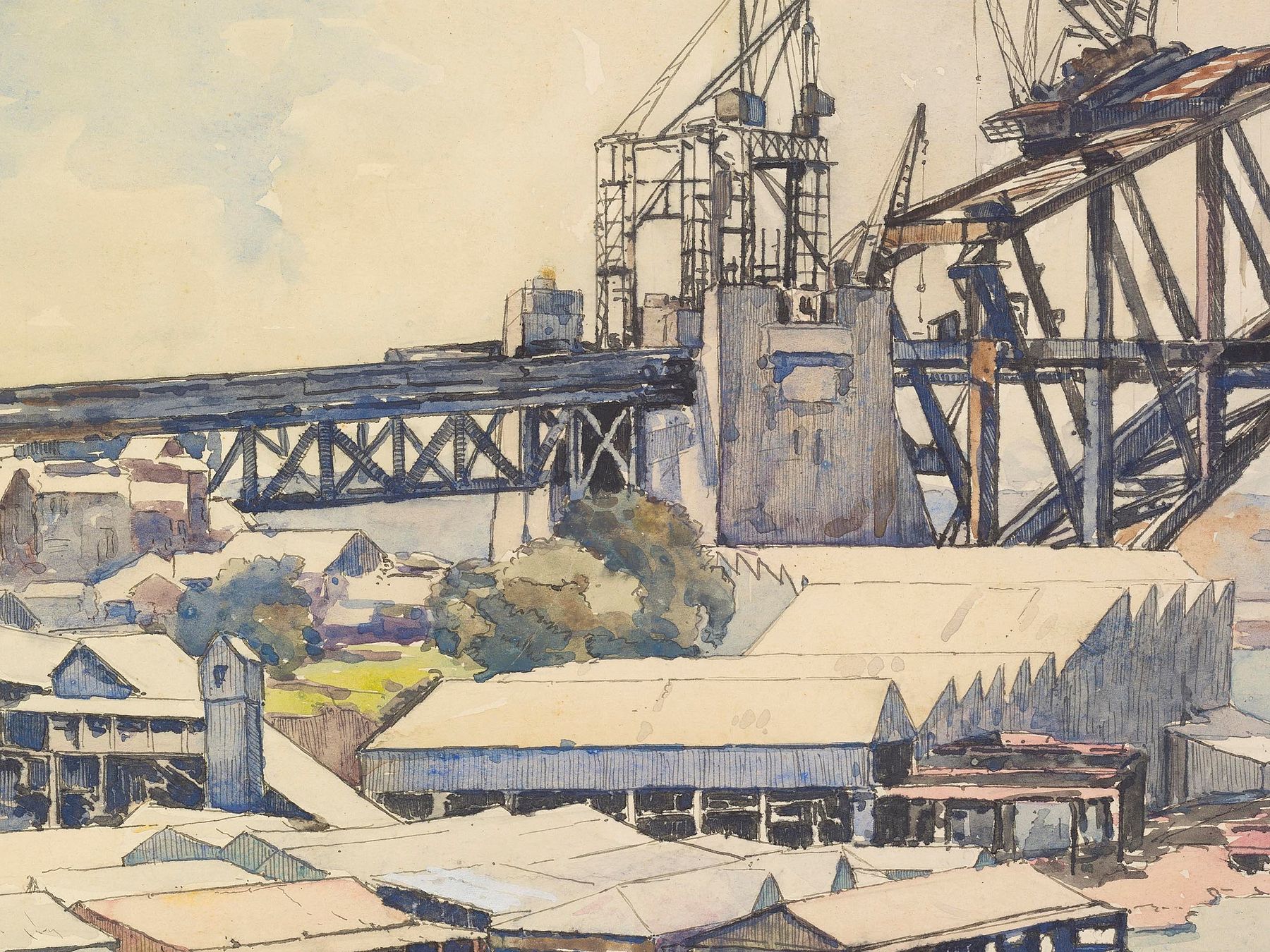
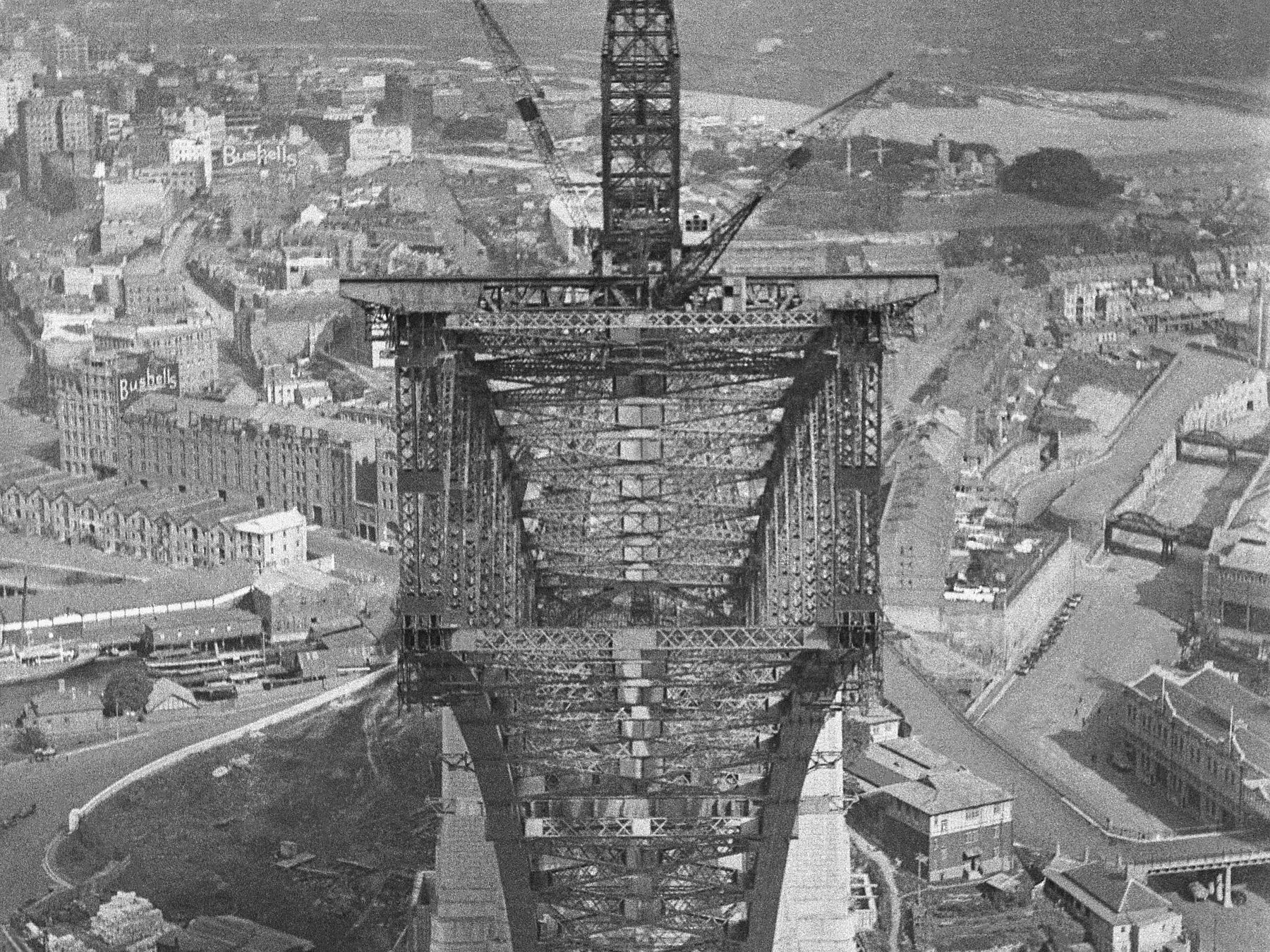
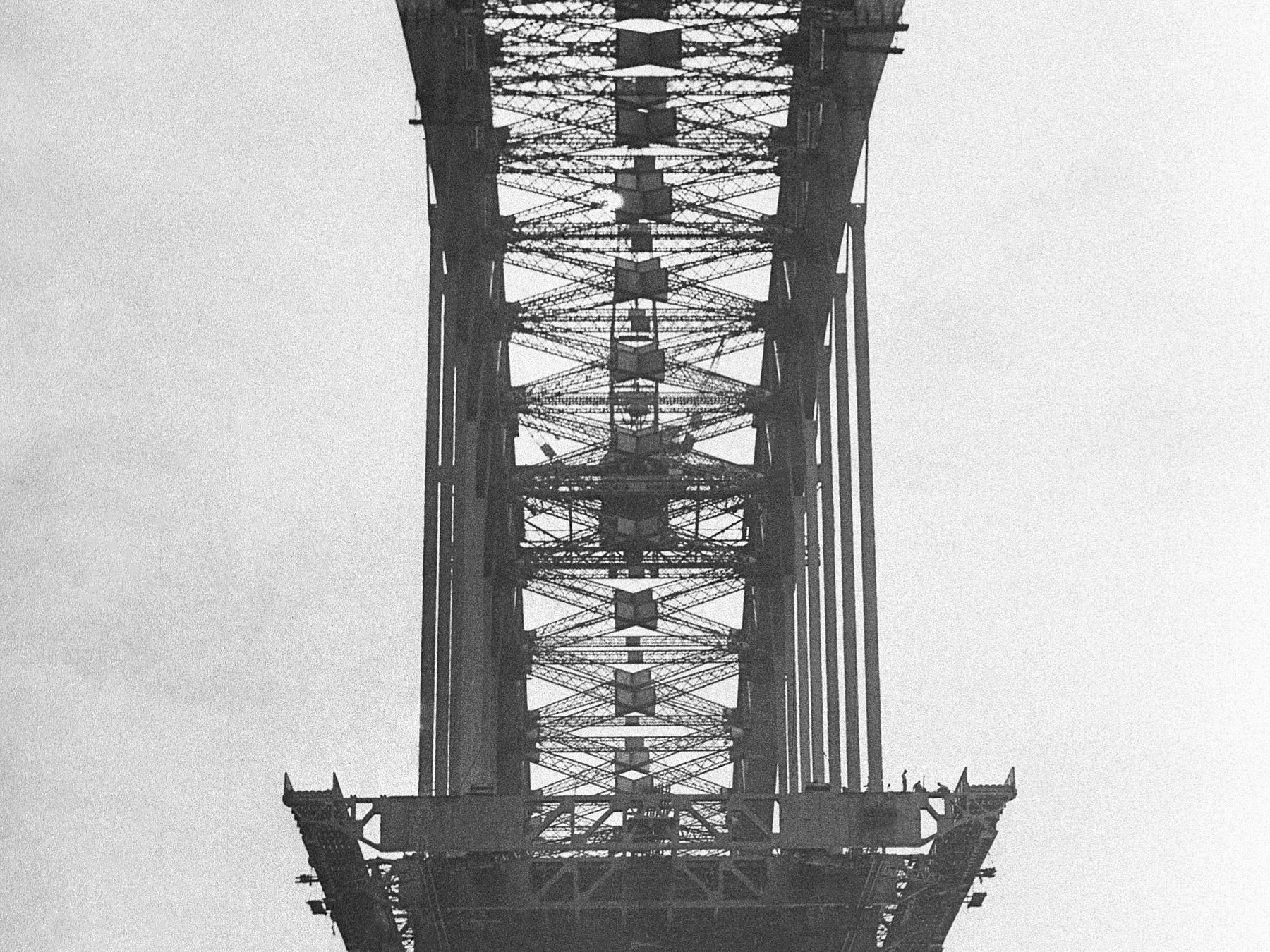
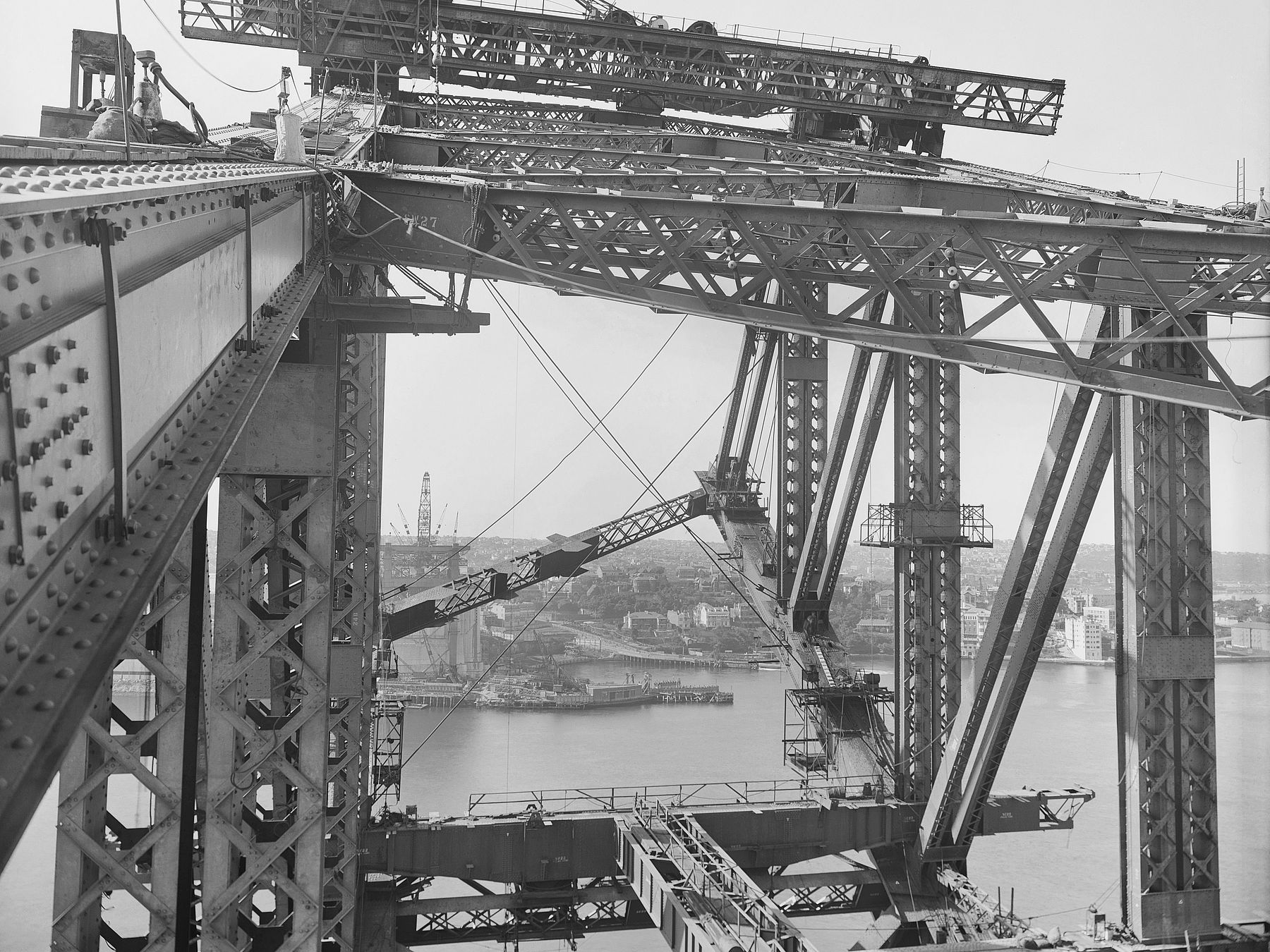
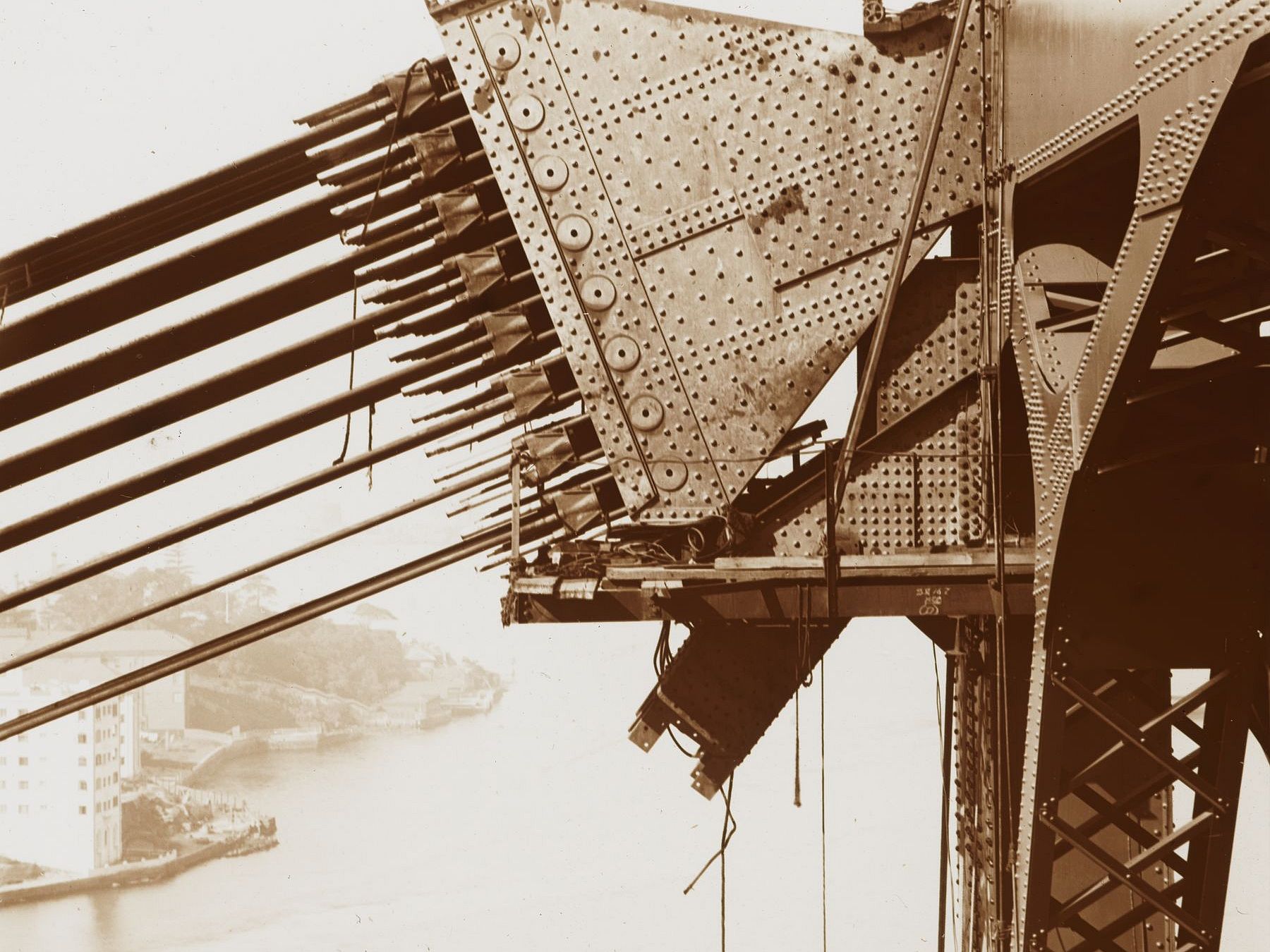
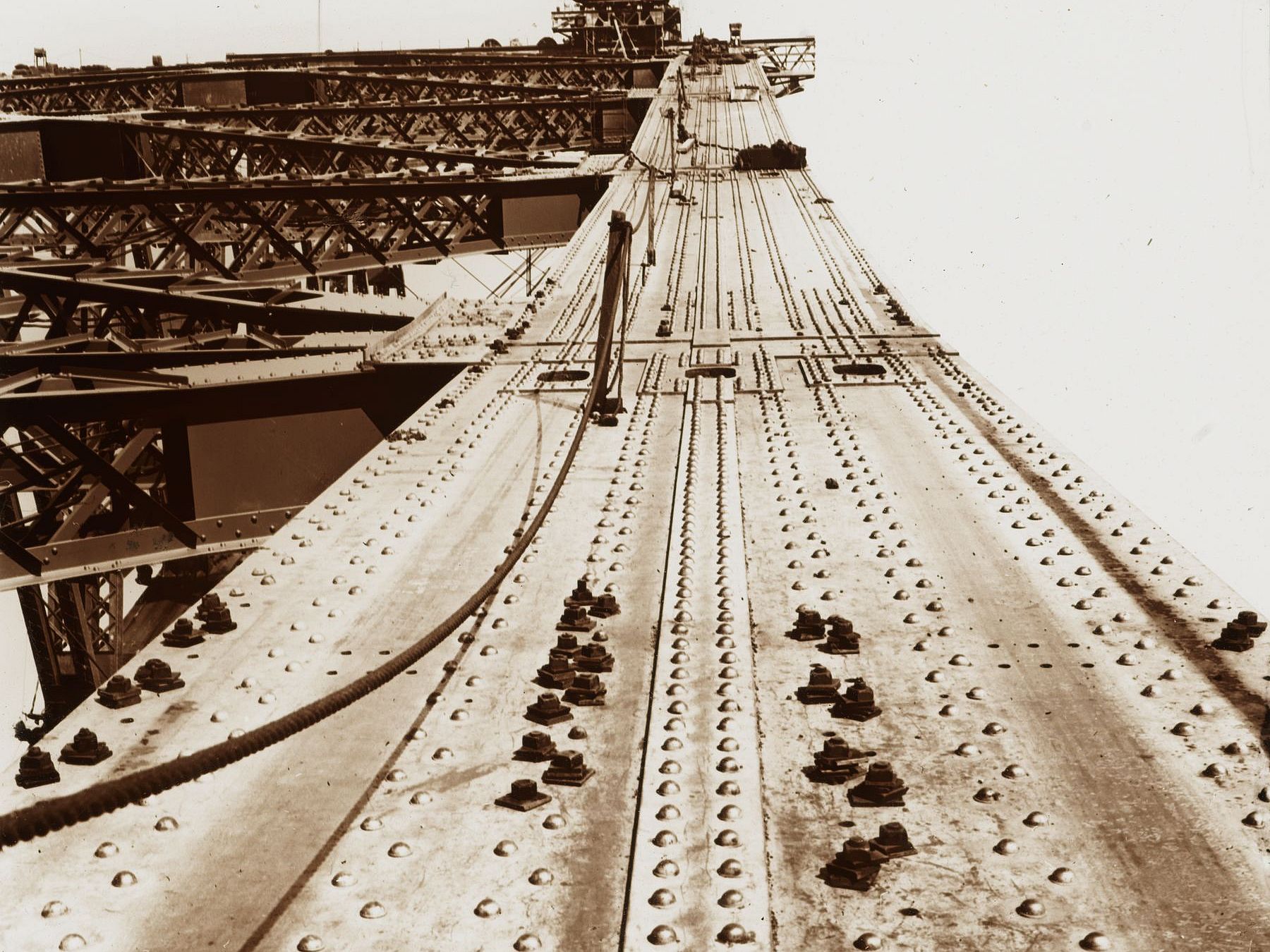
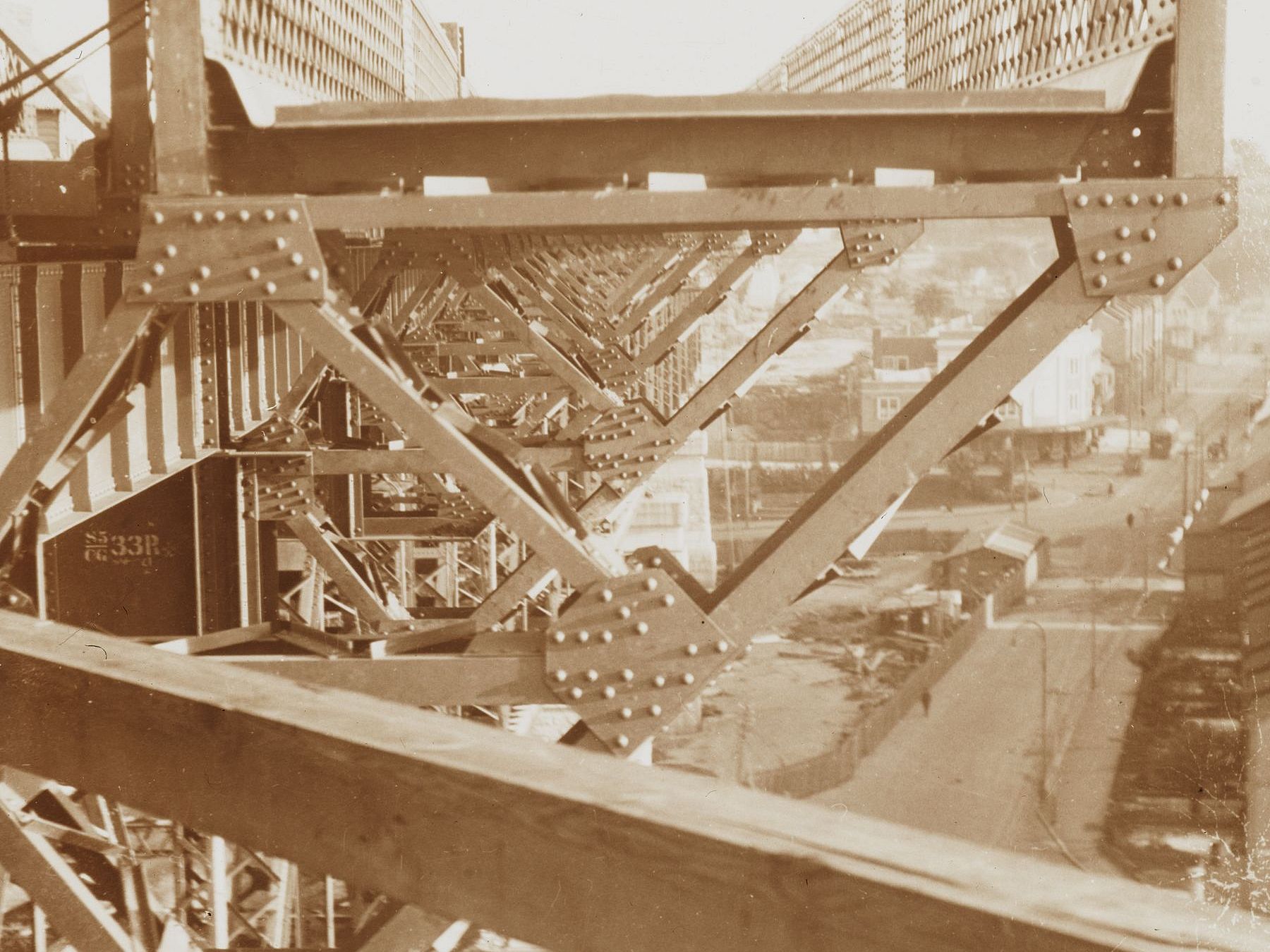
The arch now supported itself and the giant cables could be removed. It was a historic day, commemorated by the raising of the British and Australian flags on both sides of the Bridge.
Once the arch has been completed, the rest of the Bridge was built with speed.
By June 1931, the deck running its length was in place and topped with asphalt. Rails were placed for trams and trains. In January 1932, the final piece of granite was laid on the northwest pylon.
The Bridge’s first test came in February: a load-testing, with 96 steam locomotives laid end-to-end atop its deck.
More than able to withstand these stress tests, the Sydney Harbour Bridge was declared safe for traffic.
It was announced soon after that the Bridge was ready to welcome the sea of humanity awaiting the harbour crossing.
On 19 March 1932, after decades of acrimony, upheaval and incredible construction feats, the Sydney Harbour Bridge would finally be opened to the public. The opening itself was grand, beginning and ending with fireworks specially prepared for the occasion. That day, however, the festivities were interrupted by an additional, unexpected display that was equally explosive.
In Episode Four we relive the opening spectacle, an arrest and a city’s celebrations.